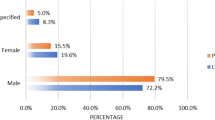Abstract
Multiple examples of unsafe and incorrect treatment recommendations shared everyday. The challenge, however, to provide efficient, credible, and quick relevant access to reliable insight. Providing computational tools for Parkinson’s Disease (PD) using a set of data-objects that contain medical information is very desirable for alleviating the symptoms that can help to discover the risk of this disease at an early stage. In this paper, we propose an automatic CNN-clustering aspect-based identification method for drug mentions, events, treatments from daily PD narratives digests. Therefore, a BiLSTM-based Parkinson classifier is developed regarding both varied emotional states and common senses reasoning, which further used to seek the impactful COVID-19 insights. The embedding strategy characterized polar facts through concept-level distributed biomedical representation associated with real-world entities, which are operated to quantifying the emotional state of the speaker context in which aspect are extracted. We conduct comparisons with neural networks state-of-art algorithms and biomedical distributed systems. Finally, as a result, the classifier achieves an accuracy of 85.3%, and facets of this study may used in many health-related concerns such as: Analyzing change in health status, unexpected situations or medical conditions, and outcome or effectiveness of a treatment.
Access this chapter
Tax calculation will be finalised at checkout
Purchases are for personal use only
Similar content being viewed by others
References
Grissette, H., Nfaoui, E.H.: Drug reaction discriminator within encoder-decoder neural network model: Covid-19 pandemic case study. In: 2020 Seventh International Conference on Social Networks Analysis, Management and Security (SNAMS), pages 1–7 (2020)
Grissette, H., Nfaoui, E.H.: A conditional sentiment analysis model for the embedding patient self-report experiences on social media. In: Advances in Intelligent Systems and Computing (2019)
Grissette, H., Nfaoui, E.H.: The impact of social media messages on parkinson’s disease treatment: detecting genuine sentiment in patient notes. In: Book Series Lecture Notes in Computational Vision and Biomechanics. SPRINGER International Work Conference on Bioinspired Intelligence (IWOBI 2020) (2021)
Grissette, H., Nfaoui, E.H.: Daily life patients sentiment analysis model based on well-encoded embedding vocabulary for related-medication text. In: Proceedings of the 2019 IEEE/ACM International Conference on Advances in Social Networks Analysis and Mining, ASONAM 2019 (2019)
Nikfarjam, A., Sarker, A., O’Connor, K., Ginn, R., Gonzalez, G.: Pharmacovigilance from social media: Mining adverse drug reaction mentions using sequence labeling with word embedding cluster features. J. Am. Med. Inf. Assoc. (2015)
Cambria, E., Li, Y., Xing, F.Z., Poria, S., Kwok, K.: SenticNet 6: ensemble application of symbolic and subsymbolic AI for sentiment analysis. In: International Conference on Information and Knowledge Management, Proceedings (2020)
Wu, W., Li, H., Wang, H., Zhu, K.Q.: Probase: a probabilistic taxonomy for text understanding. In: Proceedings of the ACM SIGMOD International Conference on Management of Data (2012)
Cambria, E., Xia, Y., Hussain, A.: Affective common sense knowledge acquisition for sentiment analysis. In: Proceedings of the Eighth International Conference on Language Resources and Evaluation (LREC’12), pages 3580–3585, Istanbul, Turkey. European Language Resources Association (ELRA) (2012)
Shiang Wang, C., Ju Lin, P., Lan Cheng, C., Hua Tai, S., Kao Yang, Y.H., Hsien Chiang, J.: Detecting potential adverse drug reactions using a deep neural network model. J. Med. Internet Res. (2019)
Grover, S., Somaiya, M., Kumar, S., Avasthi, A.: Psychiatric Aspects of Parkinson’s Disease (2015)
Tsoulos, I.G., Mitsi, G., Stavrakoudis, A., Papapetropoulos, S.: Application of machine learning in a parkinson’s disease digital biomarker dataset using neural network construction (NNC) methodology discriminates patient motor status. Front, ICT (2019)
Nilashi, M., Ibrahim, O., Ahani, A.: Accuracy improvement for predicting Parkinson’s disease progression. Sci. Rep. (2016)
Pennington, J., Socher, R., Manning, C.D.: GloVe: global vectors for word representation. In: Proceedings of the Conference EMNLP 2014—2014 Conference on Empirical Methods in Natural Language Processing (2014)
van Engelen, J.E., Hoos, H.H.: A survey on semi-supervised learning. Mach. Learn. (2020)
Nikfarjam, A.: Health Information Extraction from Social Media. ProQuest Dissertations and Theses (2016)
van Mulligen, E.M., Fourrier-Reglat, A., Gurwitz, D., Molokhia, M., Nieto, A., Trifiro, G., Kors, J.A., Furlong, L.I.: The EU-ADR corpus: annotated drugs, diseases, targets, and their relationships. J. Biomed. Inf. (2012)
Grissette, H., Nfaoui, E.H.: Enhancing convolution-based sentiment extractor via dubbed N-gram embedding-related drug vocabulary. Netw. Model. Anal. Health Inf. Bioinf. 9(1), 42 (2020)
Author information
Authors and Affiliations
Corresponding author
Editor information
Editors and Affiliations
Rights and permissions
Copyright information
© 2022 The Author(s), under exclusive license to Springer Nature Singapore Pte Ltd.
About this paper
Cite this paper
Grissette, H., Nfaoui, E.H. (2022). The Impact of COVID-19 on Parkinson’s Disease Patients from Social Networks. In: Ben Ahmed, M., Teodorescu, HN.L., Mazri, T., Subashini, P., Boudhir, A.A. (eds) Networking, Intelligent Systems and Security. Smart Innovation, Systems and Technologies, vol 237. Springer, Singapore. https://doi.org/10.1007/978-981-16-3637-0_60
Download citation
DOI: https://doi.org/10.1007/978-981-16-3637-0_60
Published:
Publisher Name: Springer, Singapore
Print ISBN: 978-981-16-3636-3
Online ISBN: 978-981-16-3637-0
eBook Packages: Intelligent Technologies and RoboticsIntelligent Technologies and Robotics (R0)




